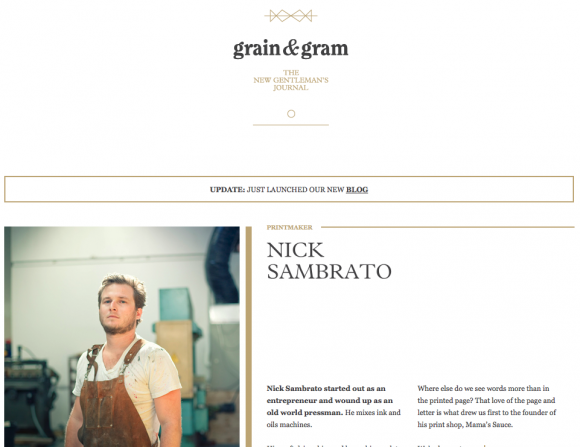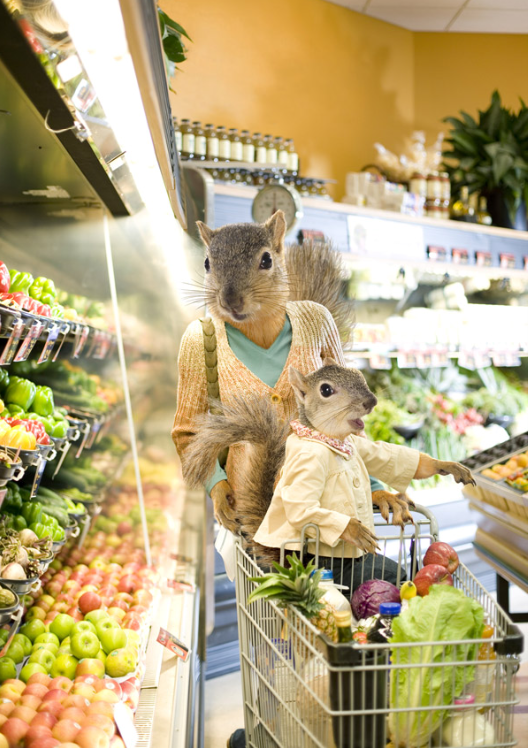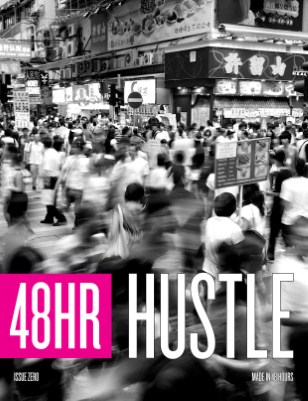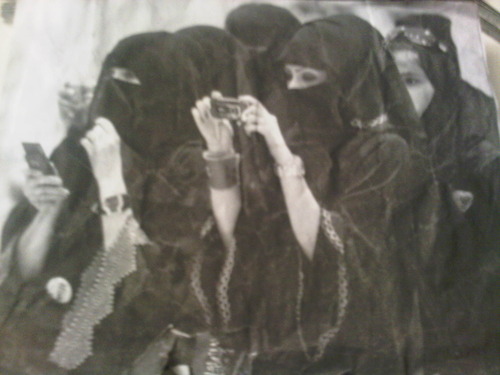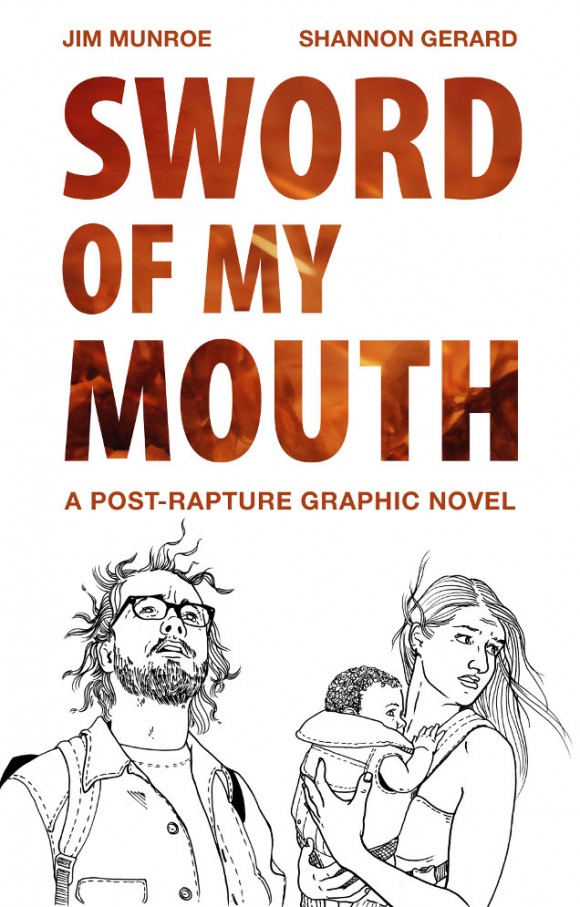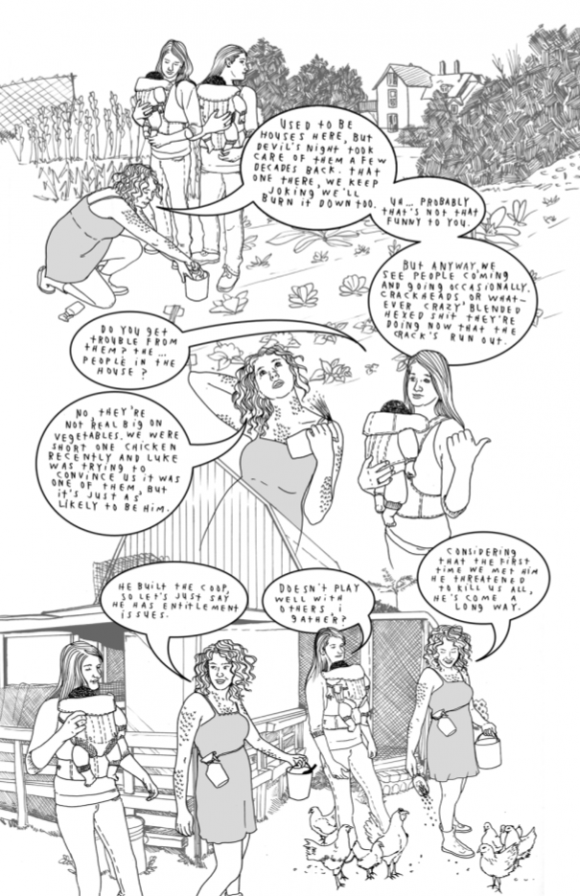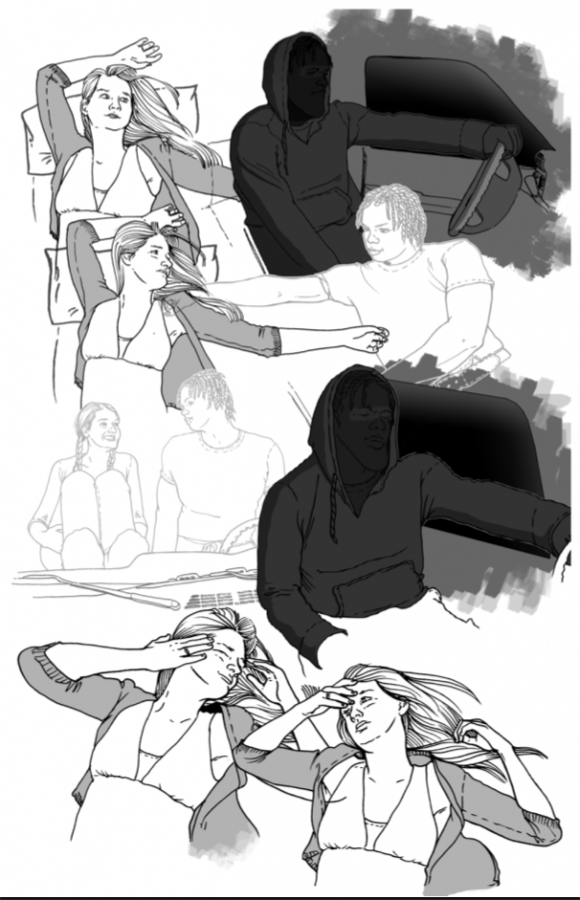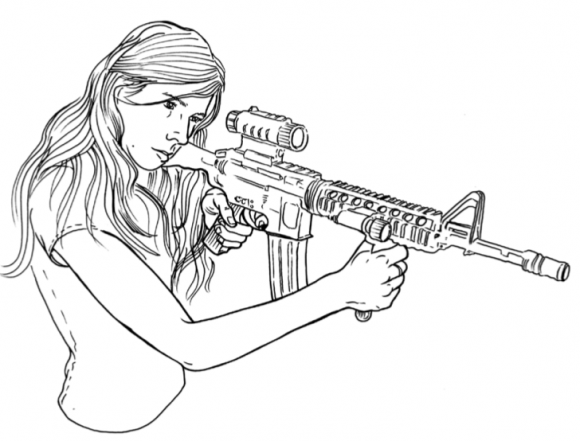Issue Five contributors Danny Jones and Jonpaul Douglass have started a new monthly online publication dedicated to gentlemen and the crafts that they love. Grain & Gram interviews men immersed in, and enthralled by, the process of making things. The second issue went live yesterday and features letterpress guru Nick Sambrato, of Mama’s Sauce Print Shoppe. My favorite thing about G&G is the scroll-ability of the page. Most websites are obsessively all about the clicks. Danny’s meticulous attention to detail and angular design style paired with Jonpaul’s rich, textured photos eliminate any desire to leave a page, making the G&G reading experience a smooth and engaging one. Cheers to Danny and Jonpaul for, yet again, making something very cool. Looking forward to seeing who they spotlight next.
Archive for the ‘art’ Category
Happy Birthday ‘Merica.
Happy Birthday, USA.
I hope you did something yesterday to make you feel patriotic and I hope you didn’t work, like more than a few people did.
If you did work, you probably felt like you were in Communist Russia. And last time I checked, this was still America. Tell that Rooski boss of yours to quit treading on you.
I hope you ate some American food.
And saw some things that reminded you why this country does, on occasion, kick much ass.
real/fake.
Digital designer, Judy Rush, offers insight into the realm of 21st century photo editing with real/fake. Rush pioneered the surreal aesthetic that’s been dominating the ad campaigns of Fortune 500 companies lately. real/fake shows the process, from digital editing software to old fashioned smoke and mirrors. It’s always interesting to see things get made. Is it just me or does it remind you of the writing process? You start with an image or a sound that captures your attention for wahtever reason and you try to create a world to give it some context. Strange that photographers and digital media artists have to rely on software to get their vision across. Sometimes it’s inspiring that all a writer needs is her noggin.
Caitlin Hackett
Check out the modern mythology of Caitlin Hackett. I’ve got half a mind to start an internet petition to get her and Matt Bell to work on a fucked up storybook together somewhere down the line. How sick would that be? {via}
BBCDW: How Pleasure Works.
Haven’t done one of these in a while. 120 in 2010 kinda bumped them out of ranking as of late, but since I’m sloughing through a short story collection right now I’m happy to return to reviewing book covers.
Apologies for not finding a bigger image for Paul Blooms’s How Pleasure Works, an exploration into the inner-workings of our desires. It’s really hard to use embellishments like the ones flanking the subtitle without it looking like you’re trying to cultivate a look of high falootin’-ness. The stark, empty space background is nothing new but the oyster with the pearl inside is provocative and the most interesting thing about this cover. There isn’t cover design in recent memory as overtly vaginal as this one, the designer pulling a double whammy of desirable imagery, albiet in a not-terribly-subtle fashion. If neither of these images is desirable to you then here’s the boring, cheesy SFW cover:
Hello from Florida.
Oh, Florida, you really made me love you a lot last night.
Our very own Jen O’Malley curated a show for the Snap! Orlando Photography Festival, which Annalemma sponsored. It was dedicated to photographers from Florida and their images of the Sunshine State.
Annalemma contributor, Kim Vang.
An excellent point the show made last night is that Florida (Central Florida in particular) has this cultural perception of being strictly a tourist destination, an entire section of the country existing as this homogenized and commodified culture made safe for mass consumption. Let’s not kid ourselves, that’s a big part of this state. But, like everything, this is just the veneer, and if you’re curious or adventurous enough, Florida will surprise you with its treasures.
Treasures like the photography of Christopher Bolton. This one sold within minutes of the gallery opening. Not surprising in the least.
Another big seller was our very own, Rose Wind Jerome.
Louise Erhard’s photographs of a dilapidated, yet still operational, motel near West Palm Beach, another pocket of Florida that’s got more stories than anyone can handle.
My mom and the kitsch wall.
Kitsch has been a part of Florida long before the mouse invasion. That comes with being a sunny climate most of the calender year.
You can either be annoyed by this crass expression of consumerism, or you can be charmed by the ideal and naive worldview that it represents. I think most Floridians look at it through both lenses from time to time.
Here is a secret of Florida that outsiders don’t know. We have springs. They call to us. We go to them. They fill us with life.
A new (to me) photographer who’s work I regrettably failed to capture last night was Ted Hollins who photographs the Zora! festival every year. The images on his website are hard to find but check out the photo grid in the lower left. Some amazing shots. More to come on Ted in the future.
This man makes works crazy hard at making a good living doing something amazing in Florida.
Congrats to Jen for not only curating an amazing show, but for helping shed light on the unseen pockets of beauty and horror that lay just beneath the saccharine manicured surface of Florida.
Hey Florida!: Photo Show Tonight.
There is some cool shit happening tonight if you live in Orlando: Annalemma is sponsoring “Hello from Florida: Photographs of the Sunshine State” a photo show curated by none other than our own print designer, Jen O’Malley.
The show will feature all works by Floridian photographers including Annalemma contributors Rose Wind Jerome, Ryan Marshall, Kim Vang and Wheat Wurtzburger.
6-10pm at Gallery at Avalon Island (39 South Magnolia Ave. Orlando, FL 32801) as part of the Snap! Orlando Photography Festival. Come on out folks, it’s gonna be tighter than my hands around the throats of BP Oil executives, given the opportunity.
120 in 2010: 48 Hour Magazine.
The idea behind 48 Hour Magazine is an interesting one: Using all the tools of media available today to create a magazine that’s cool, fast and cheap.
In the opening letter the editors state they’re trying to marry the immediacy of the web with the permanence and beauty of print. A few weeks ago they announced a call to submit, people gave them their email addresses and the editors of fired off the starter pistol in the form of announcing the theme. Then a 48 hour frenzy of writing, photographing, illustrating and designing an entire 59 page magazine. Using a print-on-demand service called Mag Cloud, they uploaded a PDF file, figured out how much to charge for the magazine (Mag Cloud charges 20 cents per page) then folks go online, order it and it gets printed and shipped to them in a couple of days. Take a moment to catch your breath.
The only thing I’m having a problem with is this “beauty of print” part of the equation. While the print design is clean and straightforward, the images colorful and immediate, the actual quality of the book itself is inscrutable from anything you’ll find on the newsstands. I guess when I think of the “beauty of print” I think of magazines like Cabinet or McSweeneys, publications that treat the magazine as an artifact, another arena and opportunity to make something beautiful, to make a statement, and hopefully differentiate itself as much as possible from anything you could ever find on the web. But maybe that’s just me holding unrealistic standards.
The content is fun and resonant, the charts and graphs are colorful and informative. But the words seem to only skim the surface, a roadblock they no doubt hit due to their time constraint. It’s hard to come up with in-depth writing in less than two days.
The most impressive and appealing thing about 48HR is the speed with which it was created, a speed that speaks to the youthful feel of the book. The energy and exceitment, even the theme of the issue (Hustle), radiate this kind of vibrancy and possibility that’s downright sexy.
Final verdict: awesome (revolutionary?) media experiment. Future of print? Debatable.
Now I Remember.
If you’ve got some time to kill delving into a Tumblr check out Now I Remember, an ongoing collection of cell phone photos from Tino Razo, Neckface, Jerry Hsu, Curtis Buchannan, Jen Reynolds, Kevin Long, Aaron Bonderoff and Issue Six contributor, Todd Jordan. These folks did a show of all cell phone photos in Tokyo recently, and apparently liked it so much they’re not stopping. Add it to your feeder for an intermittent dose of raw goodness.
120 in 2010: Interview with Shannon Gerard.
Shannon Gerard is an illustrator, designer and artist based out of Toronto, Ontario. Novelist and indie publishing guru, Jim Munroe, recently tapped Gerard to pen the images for the latest installment of his graphic novel series, Sword of My Mouth. In Munroe’s post-rapture universe, literal magic is possible when a “field” is lifted from the earth by a mysterious entity, now making anything in the human imagination possible, like casting spells, mutating oneself into a fish-person and the rapture of millions of believers up into the stratosphere. The first installment, Therefore Repent! took place in Chicago, with familiar locales and landmarks playing a large role in the story. SoMM continues this theme by adopting the people and places of Detroit to tell the story of what happens in a world where the impossible is possible and who’s playing the angles to exploit the situation.
I spoke with Gerard via email regarding her artistic process, collaboration and urban gardening. Enjoy.
A: How did the SoMM project get started?
SG: Jim asked me to give him some feedback about Therefore Repent! way back before it was published and I was pretty excited about the story because I’d grown up in Christian youth group watching the Left Behind movies and hearing pretty serious takes on the Rapture. When SoMM came around, it was a really great opportunity for me to explore some of that weirdness and also address the humor in those childhood experiences through being part of Jim’s fictional world.
A: How much of the completed story did Jim bring to the table?
SG: I think he just knew that he wanted the story to be set in Detroit and maybe had a loose idea about the characters. Early on we took a research trip to the city with a very sketchy framework in place. I wanted to take as many pictures of the city as possible and Jim (I think) wanted to meet people and find out what issues were most important to the place for people really living there.
A huge leap for the story was seeing some of the urban gardens that exist in Detroit, especially the Catherine Ferguson Academy which is this amazing, fully producing farm with a wide range of vegetables, so many kinds of animals, a solar barn, a little orchard and an apiary. It is smack in the centre of a seriously depressed urban area. I’m guessing it is like 3 or more acres big. Amazing. The volunteers working there on the day we visited were incredibly open to showing us around and gave us so much to think about self-sustainability.
One of the mottos I noticed on a lot of signage in Detroit was “Say nice things about Detroit!”– as if people living there really believe in the power of stories to transform popular (and sometimes really wrong) opinions about places. Almost without exception, the folks we met were so happy and so eager to talk about their city to us.
So those research trips (we took 2) helped the story in SoMM to evolve.
A: How much of the obligation was on you to tell the story visually?
SG: I would not call it obligation since the dynamic between Jim and I while working was really open and equal. I never felt it was Jim’s story that I was interpreting or trying to “get right.” Since he involved me so much right from the beginning by inviting me to drive to Detroit with him, I felt like I understood his way of creating and knew where the tensions and plots and motivations of the book came from. We talked a lot about the characters and their relationships since that is so much the focus in my own work and it was really great how much freedom I had to communicate those emotional sub-plots and back-stories through the images.
Also, Jim was really open to my panel-less structure. Even though he gave me a script with traditional panel breakdowns, he was really into just letting me work all of his described panels into a page without organizing them so linearly. In a few instances, he gave me really specific instructions for layouts and those ended up being some of my favorite pages. I think he will not like the word “instructions” though since there was never a feeling of him telling me what to do. I had so much freedom and he even rewrote some dialogue to accommodate my drawings! Who gets that chance as an illustrator?! In a word, (the collaborative process was) amazing. I am so lucky to have such a great first experience with collaboration.
A: Can you describe your work process? Do you work with models? Any computer programs involved?
SG: I work with models who actually act out the story in improvised segments as I take pictures. I give them a lot of background information about their characters and relationships but we don’t read the dialogue at all since I do not want the images to look scripted. Candid human moments between the models are what is most important to me in drawing, so this process allows me to capture as much of that quality as I can. There is also everything the models themselves bring (as improv actors) to the story that shows up in the drawings. By not reading the script but just playing the story out, I was able to draw upon so much that felt real and in that way told my own version of the story, along with and in support of Jim’s script. Lucky for me that he never felt threatened or weird about that but embraced it as part of the book.
After I have like 500 more photos than I actually need, I go through them and choose the ones that reveal or represent the best moments from people. So many times, I am compositing pictures from multiple shoots because the models are rarely all available at the same time. Then I make photo-based mock ups of the pages and print and trace those photos as drawings. (Using my beloved micron 0.2 pens. I went through literally hundreds of those pens on this book!) My favourite example of the compositing of separate shoots into one drawing was a page on which two characters hug. The models in that embrace could not meet on the same day, so in both shoots, they hugged a stand-in. Then later I drew them hugging each other. The stand-in was the same person in each shoot, so if you could see behind the curtain where he was edited out, you’d have a drawing of him hugging himself.
I don’t draw the pages as they look in the book but work on individual frames. Then I use photoshop to composite the drawings into the layouts that appear in the final story. It is a time consuming process to not draw the pages as whole compositions, but I like how much freedom it gives me to make choices about character relations and page design as I go along.
A: When did you do your first comic and was there a particular artist that inspired you to play with that form?
I guess I started working on comics in 2003 or so when I made this stupid inside-joke static type comic about the bookstore I worked at. That embarrassing PoS was called Five Finger Discount.
My inspiration to make comics did not really come from another visual artist but from essayist Annie Dillard. I was drawing a lot and also writing a lot and then read a piece in which she described the realization that she could be a writer without being a novelist. She said that deciding to write creative non-fiction and poetry felt like switching from a single reed instrument to a full orchestra. That made such exact sense to me and I started to play with mixing text and images and with making artist’s books.
A: How does working in a short form compare to a full-length graphic novel?
SoMM is my first long form project. It was a huge challenge to work for so long on telling one story, but I am lucky to have done it as a collab. I’m not sure I would have had the faith in my own work over such a long period.
A: Did you study any graphic novels before starting work on SoMM? Any influences?
SG: I didn’t study any works in particular but I looked to my heroes for a lot of inspiration: Rutu Modan, Jillian Tamaki, and Lynda Barry. I also read a lot of my favorite prose to keep up the moony, emotional floatiness I like while drawing: Miriam Toews, Michael Ondaatje and Kathleen Norris.
A: How long did the it take to complete the work?
SG: Over a year. I clocked around 1000 hours.
A: Do you have any plans for future graphic novels?
SG: Yes, I am working on a collection called Unspent Love; Or, Things I Wish I Told You. Not a long form story though. It is a collection of small prose-poemy vignettes.
There is also a slow burning story in the works about my father’s childhood.
And I am also trying to tie up, once and for all, my older series Hung by printing a fourth story over top of the first story. A printer’s error in 2005 ended up giving me an extra 200 or 300 copies of Hung #1, which I am now so embarrassed by (that’s good right?), so I am resolving some of that anxiety by using a letterpress to overprint Issue 4 on top of the older books.
Sword of My Mouth is available now and can be purchased here.












